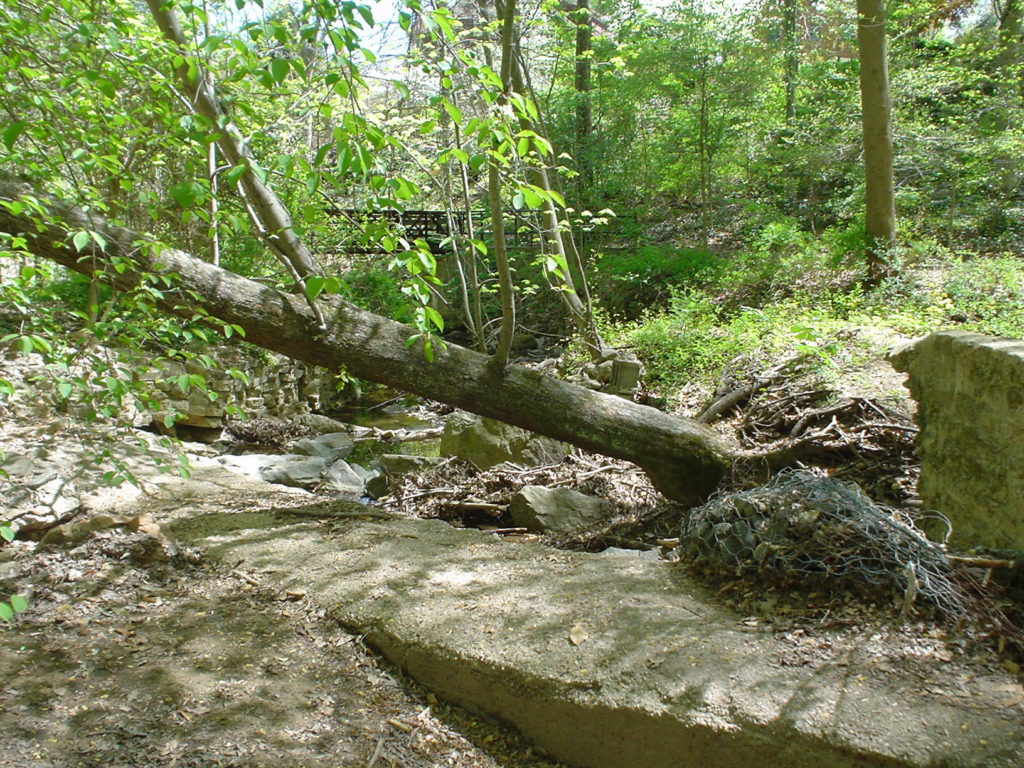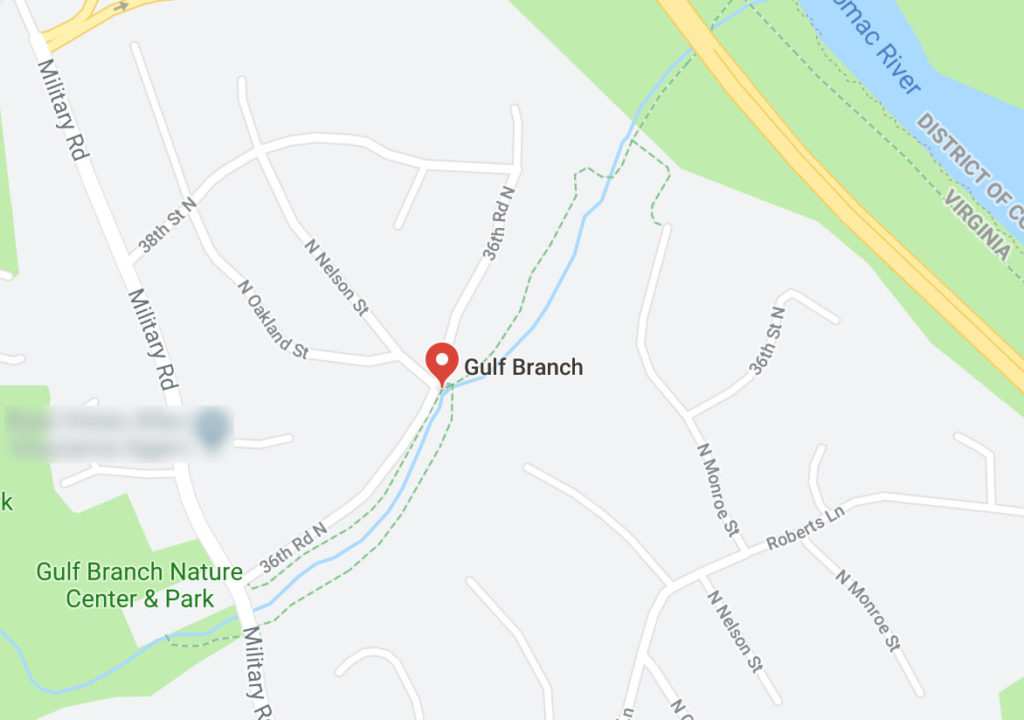Officials are asking for the public’s feedback on a plan to stem the tide of erosion plaguing one local stream.
Residents can fill out an online survey to share their thoughts on the Gulf Branch Stream Restoration project this summer as the county officials work to prepare designs for protecting the waterway and the trees that call its banks home.
The stream faces problems stemming from the increasing amount water flowing down its channel due to stormwater runoff. This causes the stream to eat away at the banks, which exposes roots and pipes, and carries sediment downstream, according to Watershed Outreach Program Manager Aileen Winquist.
“Restoration projects actually are trying to create a stream channel that’s stable for the long term,” she told ARLnow yesterday (Tuesday.) “So we’re designing a new stream channel that will help the stream water dissipate energy as it flows down, so it’s not doing as much damage.”
Officials are planning to change the way the stream curves and add step-pool structures to slow the water flow. The work will be similar to measures county crews previously took to restore the Donaldson Run stream.
Winquist says reducing erosion along waterways like Donaldson or Gulf Branch is critical because when too much dirt is carved out of the banks it can cause health problems for fish and other water-based wildlife. Sediment siphoned downstream can also cloud the surface of the Chesapeake Bay, preventing sunlight from reaching the watergrasses that shelter crabs, filter water, and feed aquatic creatures.
In the case of flash floods, algae can also bloom which strips the oxygen from the water, killing aquatic life. Chemical pollution can have the same effect — as the Gulf Branch stream experienced in 2012.
Because of this, Virginia requires local jurisdictions to lower sediment pollution levels. Arlington pledged to reduce pollution levels in 2012 by 5% in 2018, and enacted programs and ordinances to reduce the amount of stormwater runoff and pollution.
Stream erosion also causes infrastructure challenges, Winquist said. Because many of the county’s older sewer lines from the 1950s rely on gravity they run under stream valleys. As a consequence, recent floods damaged pipes like the one under Lubber Run, which in turn swallowed the stream.
“When first installed, they were installed several feet down,” Winquist said. “But as as the stream erodes down over time, they become exposed.”
A pipe under Gulf Branch was encased in concrete to prevent damage from exposure — but now the concrete is crumbling.
Winquist noted that in the past, some residents have expressed concerns over trees that need to be felled as part of the process. She said the county replants at least one tree for each one cut and asserted that not performing the work would allow the erosion to continue and would be a greater threat to the local environment.
“It’s not a great condition to leave the stream in,” she said.
The county expects to hold a public meeting in the fall and will continue discussing restoration designs into the new year. Winquest said it will likely be “a couple of years” before construction starts.
Map via Google Maps






